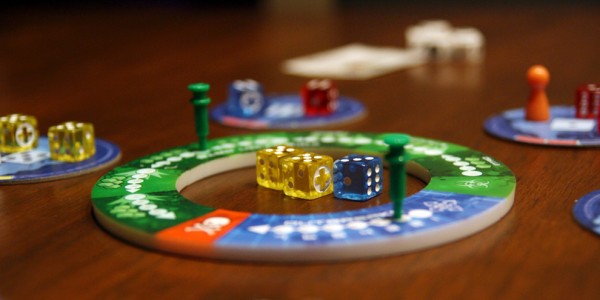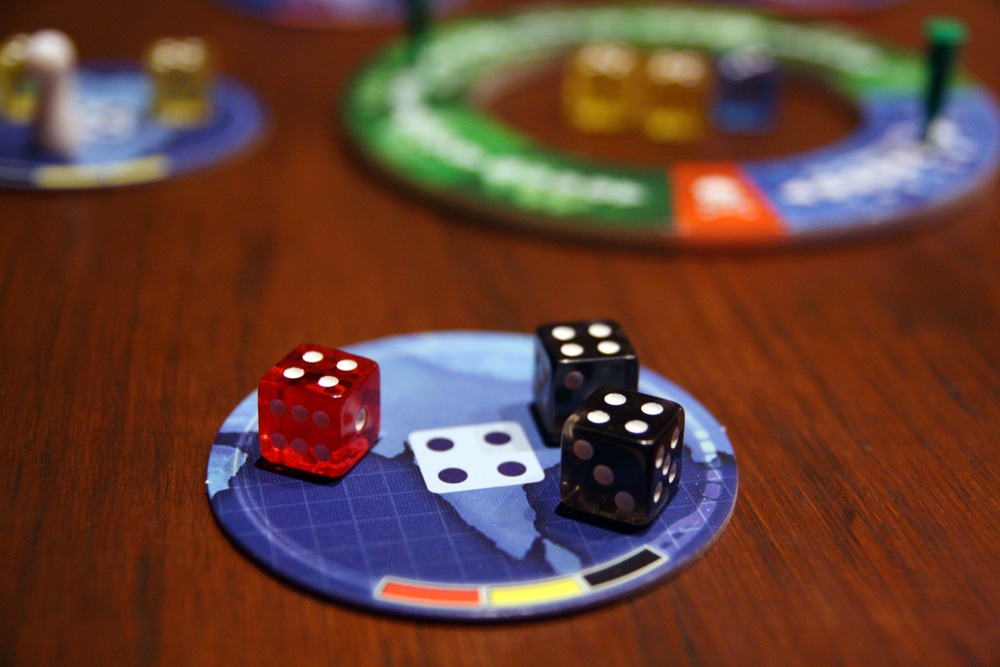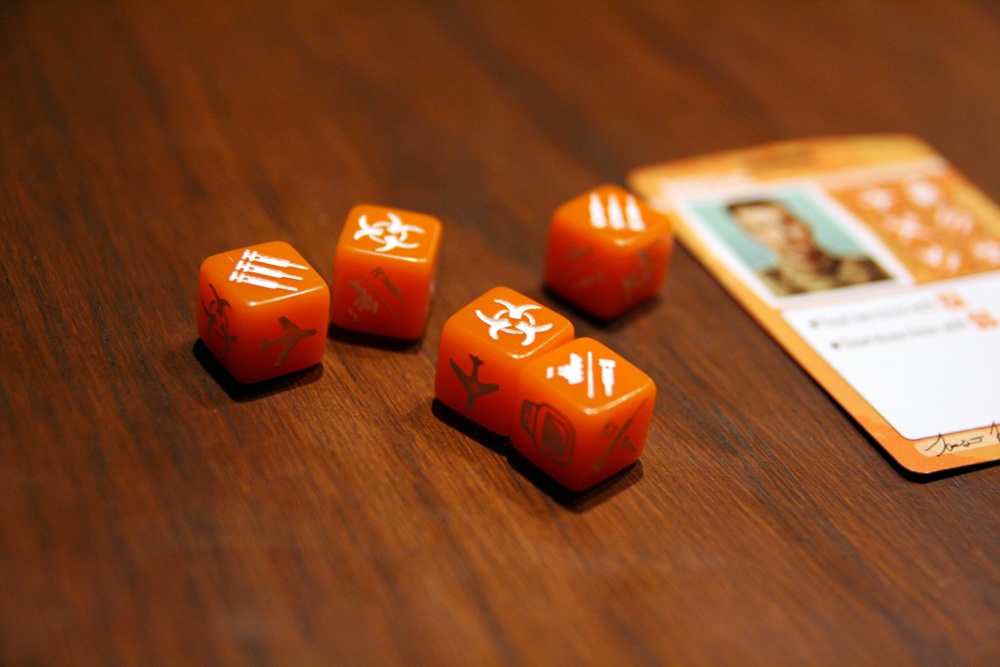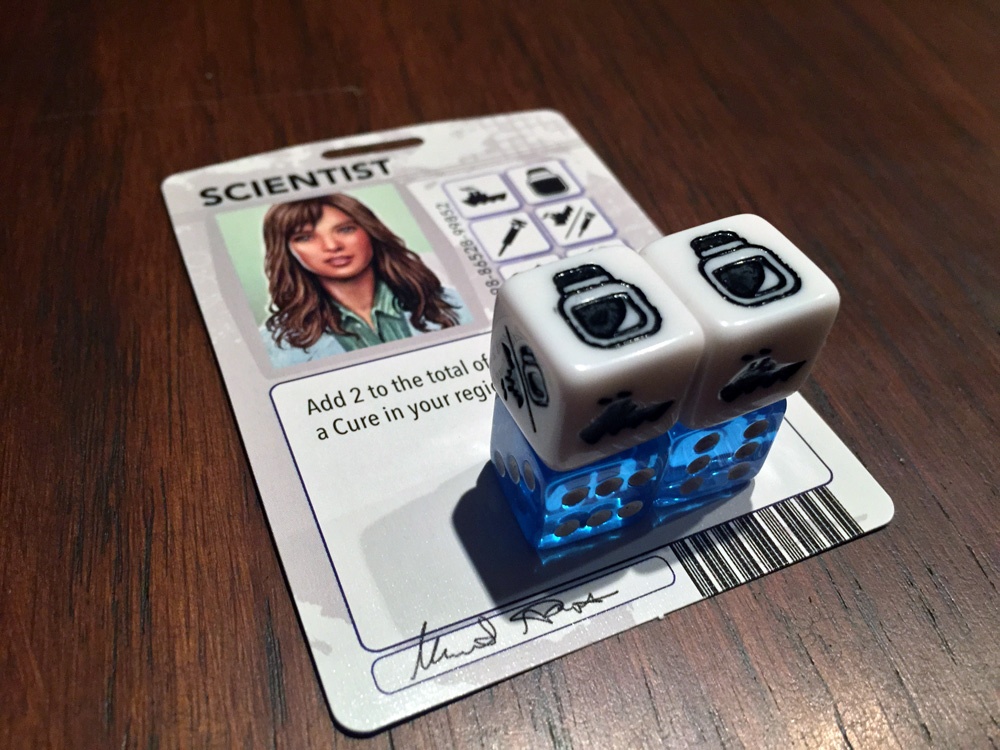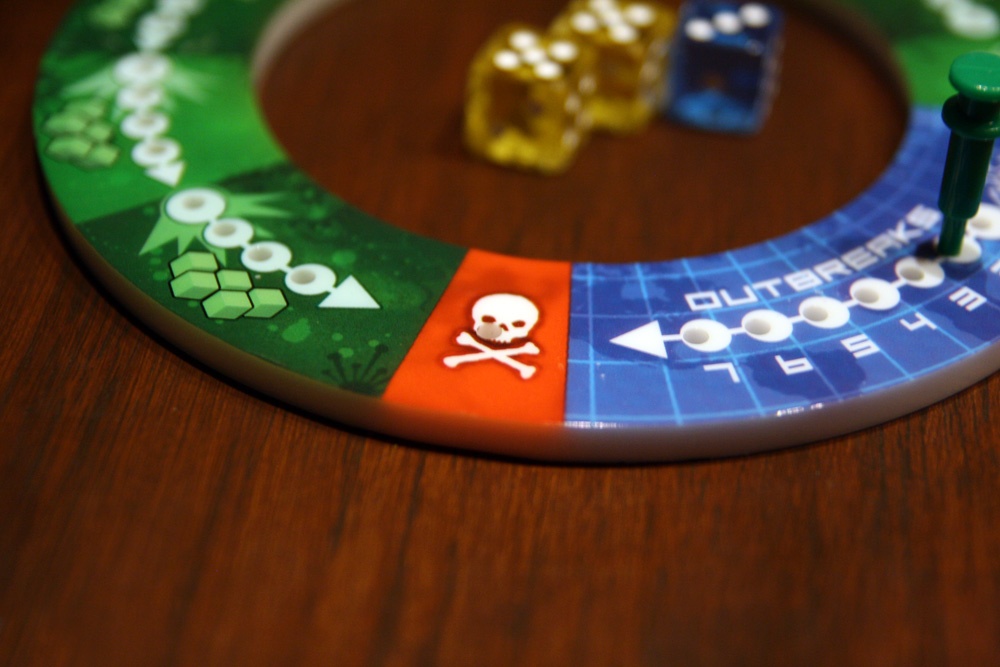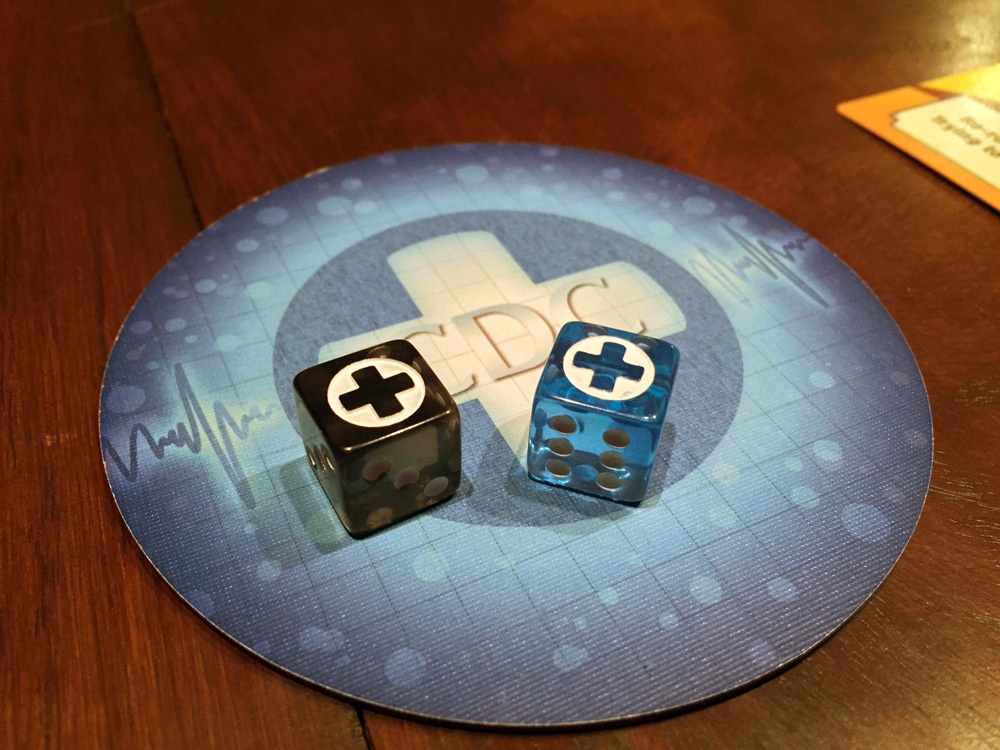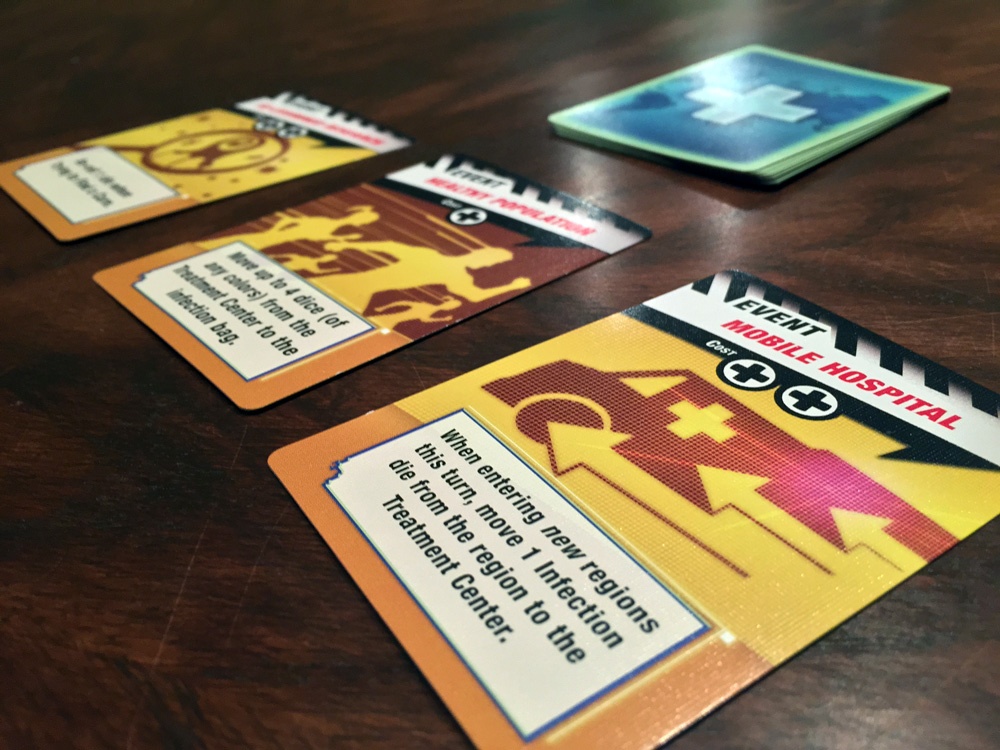 Pandemic, the game in which players work as a team to eradicate waves of viral infections as they spring up in cities across the globe, has undoubtedly grown into one of the most popular franchises in board gaming today. Designer Matt Leacock managed to combine an accessible and interesting theme with deep and engaging mechanics, creating a cooperative experience with a simple setup and relatively short play time. It has proven to be a recipe for success that has endured over the years.
Pandemic, the game in which players work as a team to eradicate waves of viral infections as they spring up in cities across the globe, has undoubtedly grown into one of the most popular franchises in board gaming today. Designer Matt Leacock managed to combine an accessible and interesting theme with deep and engaging mechanics, creating a cooperative experience with a simple setup and relatively short play time. It has proven to be a recipe for success that has endured over the years.
But what if a new, standalone Pandemic game could be even easier to set up, play at a faster pace, simplify game mechanics, streamline player action selection, limit lengthy deliberation, and still maintain the virus-spreading spirit of the original? Well then I’d say that Z-Man Games and Matt Leacock have got themselves another winner in Pandemic: The Cure. And it’s a dice game.
Essentially everything in this two-to-five-player, 30-minute game revolves around the treasure trove of custom dice that come in the box. The seven available player roles each complete their actions using unique sets of five dice (or seven, in the case of the Generalist), the four viruses spread to the six regions of the globe via the 48 Infection dice, cures are found by collecting and rolling Infection dice of matching color, and helpful Event cards are activated by spending Infection dice that show a special symbol when rolled. Progressing through the stages of play is fluid–as straightforward as pushing one set of dice aside and grabbing a handful of another type–and all of the game components are excellent, from the impressively engraved dice themselves, right down to the tiles on which they are placed throughout the game.
The playing area isn’t quite a board, but a series of tiles. Six regions, each displaying a graphic of one side of a standard die (numbered one through six) superimposed upon a section of the world map, surround a central ring. This two-piece, hard plastic pegboard doubles as a countdown to global pandemic and a seventh area called the Treatment Center. Twelve Infection dice in each of the four colors (representing the different viruses that threaten the world) reside in a large bag. These are drawn at random throughout the game and are rolled to populate the six regions of the world: twelve at the outset, and three, four, or five more after each player’s turn, depending on how far the infection rate has progressed.
Each color die has a different combination of numbered sides. All of them have one medical cross, which, when rolled, indicates that the die be sent to the eighth and final area, the CDC, for use later. The remaining five sides are some combination of three numbers, unique to that color virus. When rolled, the Infection dice are placed on the region matching each die result. The fact that these are nonstandard dice means that certain regions are more susceptible to particular diseases, and those infections will rarely show up elsewhere. If these dice run out, the world is completely infected by the viruses, and the players lose the game.
Each player in Pandemic: The Cure assumes one of seven roles. Anyone familiar with Pandemic will recognize these roles, as they are mostly the same as those in the original game. During each turn, a player will role his character-specific set of Action dice and perform one action for each die, depending on the face that is showing. What makes this part of the game special is the fact that each player’s dice have a unique combination of symbols on their six sides. The odds of treating diseases is greatly increased over all other roles when playing as the Medic, for example, because more sides of that character’s dice show syringes, the symbols that allow players to move dice either from their current region to the Treatment Center, or from the Treatment Center back into the Infection Bag. And most roles have at least one symbol and action that no other roles have access to, such as the Dispatcher’s helicopter symbol, which allows her to move any player’s pawn to any region.
The other standard actions include sailing and flying, which allow players to move their pawns to any adjacent or nonadjacent region, respectively. Perhaps most importantly, however, is the collect sample action, represented by a bottle symbol. Finding a cure to the four diseases before the infection rate, outbreak counter, or total number of infections max out is the crux of the game, and from where the game’s title arises. Rather than treating a disease at the current location or removing a die from the Treatment Center, a player may use one bottle symbol to store one Infection die on his player card along with the Action die used to collect it. This Action die can’t be used until it is freed up by finding a cure for that disease.
Players may also give away their collected samples (and dice used to bottle them) to players in the same region. When enough infection dice have been stored, a player may, once per turn, roll all stored dice of a single color in hopes of rolling a total result of 13 or more. If that threshold is reached, the disease of the corresponding color is cured and the dice go back into the Infection Bag. Once the players cure all four diseases, they win the game.
Rolling Action dice can have dire consequences, however. This is, after all, a Pandemic game. While players may re-roll their dice as many times as they wish in hopes of getting the action they’d like to perform, one side of every player die is engraved with a biohazard symbol, which cannot be re-rolled, and takes effect immediately. Each biohazard result advances the counter one space on the Infection Track, and every fourth space causes an epidemic, which is essentially an additional and amplified version of the infect regions phase that takes place after each player turn.
In the case of an epidemic, the active player roles the number of dice indicated on the Infection Track plus whatever dice remain in the Treatment Center, and then deals with any outbreaks before continuing his turn. An outbreak is triggered when a fourth die of a particular color is placed on any region. The Outbreak Track advances one space per outbreak and whichever dice caused an outbreak move one region to the right, where they have the potential to cause additional, chain-reaction outbreaks. Things can get ugly fast. Either eight outbreaks or six epidemics (24 biohazard die rolls) ends the game in a loss.
The last of the game’s elegantly incorporated mechanics is the CDC, where all Infection dice bearing a medical cross are moved during the infection and epidemic stages of the game. These are beneficial results for the players, as they act as currency to purchase any of three face-up Event cards placed in the play area during setup. These cards provide helpful bonuses and effects for the players, such as re-rolling dice, canceling biohazard symbols, moving player pawns, and skipping infection phases.
Event cards can be activated at any time, so long as enough cross dice are in the CDC. The effects take place immediately, the required number of dice return to the Infection Bag, the Event card is returned to the draw deck, and a new card is turned face-up to replace it. These cards can be very helpful, so it’s always important to keep an eye on what’s available at the CDC.
Pandemic: The Cure is a fantastic game. The constant tug-of-war between the infection phase and the players’ efforts to treat the population plays out at a rapid pace that keeps players on the edge of their seats, completely engaged even on others’ turns, and stressed out about what might happen next, either via the Infection Bag or their own Action dice. The feeling is a powerful motivator to overcome whatever the game throws at you each round and fight to beat the viruses using the resources at hand that are different at any given moment. This is actually in sharp contrast to the slower burn of the original Pandemic, which can often cause a somewhat forlorn sense of impending doom, especially knowing that a handful of at-risk cities will likely be bombarded repeatedly by the Infection Deck in that game.
Pandemic: The Cure is far more tactical, and eliminates the necessity of planning out and optimizing many moves in advance or remembering the makeup of the deck. It also suffers less from one player trying to “quarterback” the entire game. Even the base mechanics of drawing from two decks of cards and managing a hand limit for every player are completely streamlined in Pandemic: The Cure, and the implementation of the two types of dice in no way detract from the overall function of the two main game phases. That said, dice rolling can put off some players who are more interested in the type of deep, thoughtful, and synergistic strategizing between players that is afforded by the original Pandemic. Even though the odds in this game seem meticulously well balanced, there is still room for some swings in luck. I’ve never seen a five-biohazard roll before, but it’s certainly possible, though highly improbable.
If you hate dice, you probably want to steer clear of this one, but if not, this short and sweet co-op scales wonderfully with all player counts at all experience levels and is incredibly fun and exciting to play, win or lose, though it does seem to be a fair bit easier than its big brother. Still, I can’t imagine ever getting rid of Pandemic: The Cure, and I look forward to this game seeing a massive amount of table time. Its tactical nature perfectly complements Pandemic’s strategic play, and there is plenty of room for both games in a cooperative board gamer’s library.




